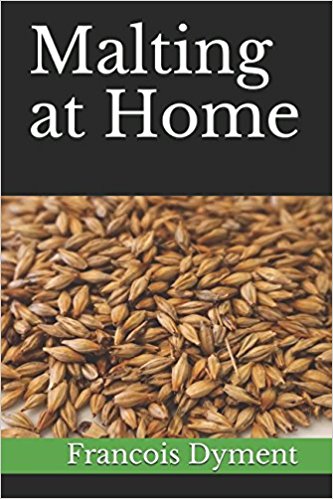The first time I tried malting at home I used a bag of barley I bought from an animal feed store. I bought their last bag which looked really old but I was just too excited to try malting with it to care. Unfortunately when I first soaked it the water turned dark grey. It was so dirty and full of nasty bits of what looked like mouse turds I ended up throwing it out. I only paid 10 bucks for that 50 lb bag so not a major loss but still it was pretty disappointing.
Since I’m running out of last years homegrown barley I thought I’d give feed barley another try. Using feed barley seems kind of hit and miss. It’s super cheap and if you’re not growing it yourself it may be your only option but it’s worth it to find a good quality feed barley. I’ve talked to people who have a good supplier of clean barley but most often you’re likely to get barley that includes some “extras” including weed seeds.
My advice: wash, wash and wash some more. I rinsed this latest batch 10 times before the water was running clear. I bought the new bag from a different store and it’s definitely not as dirty as the first but it still contained a lot of what I thought were pebbles, turns out they’re actually small dried clumps of dirt, see the pictures below.
The difference between malting barley and feed barley is that the strains of barley classified as malting barleys have certain genetic qualities that are better for brewing like lower protein and beta glucan amounts as well as higher enzyme levels.
Here’s a list of other factors that make a good quality malting barley. For feed barley expect the opposite.
According to the Alberta Misistry of Agriculture and Forestry, the following characteristics are required in superior malting barley:
Pure lot of an acceptable variety
Germination of 95 per cent or higher (three-day test)
No signs of pre-harvest germination
Protein content of 11 to 12.5 per cent (dry basis)
Moisture content to a maximum of 13.5 per cent
Plump kernels of uniform size
Fully mature
Free from disease
Free of DON mycotoxin caused by fusarium head blight
Free from frost damage
Not weathered or deeply stained
Less than 5 per cent peeled and broken kernels
Free from heat damage
Free of insects, admixtures, ergot, treated seeds, smut and odour
Free of chemical residue
These requirements will affect both the malting and brewing processes, as well as the quality of the end-product, beer.
Here’s something I got off the Ontario ministry of Agriculture website, what’s especially interesting is the last sentence.
DON, also known as vomitoxin, was the principle mycotoxin found in Ontario wheat samples in the 2000 harvest year. Its effects on horses have not been well documented. It is also called vomitoxin because it induces vomiting in pigs and dogs after ingestion of contaminated material. In various livestock species, vomitoxin will cause feed refusal, decreased weight gains, signs of gastrointestinal irritation (e.g., diarrhea, colic, rectal prolapse, and rectal bleeding), reproductive problems, skin irritation, cardiotoxicity and interference with the immune system. In mice, ingestion of DON may cause the overproduction of IgA immunoglobulins in the intestines. IgA accumulates in the kidneys and results in glomerulonephritis (kidney failure). The maximum acceptable concentration of DON in wheat intended for human consumption in flour is 1 ppm. Wheat with a concentration greater than 1 ppm will be diverted for livestock feed.
Just thought I’d throw that in there to cause some panic.
Here’s some more very interesting information in the link below on how grains are graded it includes information on animal feed. It’s nice to know that all grain is tested and regulated to this extent. It does state however that in barley meant for animal feed that .02% excreta is the maximum allowable amount. Yes it really does say excreta. If I read that right that means that in 50lb. bag of barley there could be .16 ounces of mouse turds. I’m not sure what .16 ounces of mouse turds looks like, I just hope they float. By the way .16 oz. is 4.5 grams which is about what a teaspoon of salt weighs. For malt grade barley the number is .01%
We’ll see in a few days what kind of germination rate this barley has.
Update: After taking quite a few random samples I’ve determined that this barley has a germination rate of 80%. That’s pretty low compared to the 95% or higher expected from malting barley. It’ll be interesting to find out how those un-malted grains will affect the beer. I’ve been trying to pick out any rotten ones when I see them.







